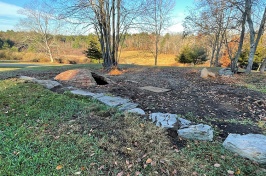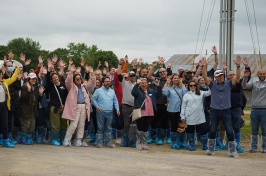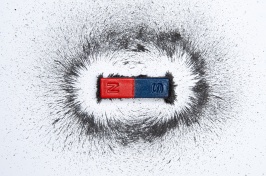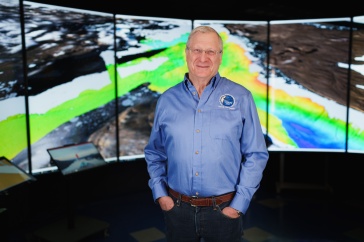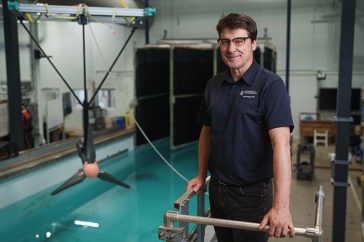
Clarice Perryman '22G, here collecting peat cores at Sallie's Fen in Barrington, N.H. in 2018, led a study on heavy metals in Alaskan soils.

Some Alaskan soils harbor elevated concentrations of heavy metals that can harm human health, but critical data gaps impede understanding of exposure risks for Arctic communities. These are the findings of new research led by Clarice Perryman ‘22G, an Earth sciences graduate student in UNH’s Natural Resources and Earth Systems Science Ph.D. program, published in the open-access journal PLOS ONE earlier this month.
Many Arctic and sub-Arctic communities face heavy metal contamination of their food and water resulting from activities such as mining and drilling. As global temperatures rise, thawing of permafrost — frozen soils — could also release naturally occurring heavy metals into Arctic ecosystems, potentially intensifying health risks. However, the amount of toxic metals in Arctic soils and the risks they pose are unclear.
“As permafrost thaws, these metals could get into food and water resources and could impact the health of people, many of whom are already vulnerable to the effects of climate change.”
“We set out to synthesize previously collected data in order to clarify soil metal concentrations across the Arctic,” says Perryman, a researcher in the Earth System Research Center in UNH’s Institute for the Study of Earth, Oceans, and Space. “But what we found, which was really striking, is that there was a huge lack of these data in public domain. We couldn’t do this type of large analysis.”
Instead, the researchers drew from the USGS Alaskan Geochemical Database to assess data on arsenic, chromium, mercury, nickel and lead concentrations in over 1,000 soil samples collected in Alaskan soils.
Most of the available data were limited to southern and southwestern Alaska, where permafrost is patchy. Meanwhile, data were severely lacking for permafrost-heavy regions in northern Alaska and the more heavily populated Interior. The data for southern and southwestern Alaska indicate that heavy metal concentrations in this region’s soils are often at least twice as high as average levels for U.S. soils.
Heavy metals can cause cancer, neurological damage, kidney damage and other health problems. The elevated levels seen in this study highlight a need for additional data to clarify how thawing permafrost could impact the health of communities across the Arctic. In particular, the authors note, further sampling is needed near human populations, in permafrost-heavy regions, and at greater soil depths.
“As permafrost thaws, these metals could get into food and water resources and could impact the health of people, many of whom are already vulnerable to the effects of climate change,” says Perryman.
“We never set out to be the team that writes the data gaps paper,” Perryman adds, “but collecting more data on the amount of heavy metals stored in permafrost is critical. Equally important is making sure these data are accessible to researchers, decision makers, and communities in order to help Arctic communities prepare and be resilient to the many effects of permafrost thaw.”
Other UNH co-authors on the paper are Jochen Wirsing, graduate student in sociology; Kathryn Bennett, graduate student in Earth sciences; Owen Brennick ’19; Apryl Perry, graduate student in Earth sciences; Nicole Williamson ’19; and Jessica Ernakovich, assistant professor of natural resources and the environment.
-
Written By:
Beth Potier | UNH Marketing | beth.potier@unh.edu | 2-1566























